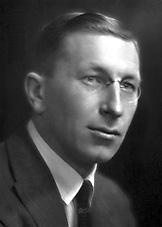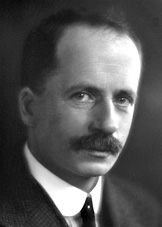April 30th, 2008 · Comments Off on History Affects Insulin
Introduction to Insulin / Chemical Properties / Methods of Production and Administering / Diabetes / Insulin Affects History / History Affects Insulin
- Recently, several pharmaceutical companies have attempted to alleviate the discomfort of injecting insulin by inventing the insulin inhaler.
- e.g. Exubera manufactured by Pfizer pharmaceutical company
- The idea of using lungs as the route for insulin administration has been researched for many years, but the right form and quantity of the hormone were never established.
- Tests have shown that dry powder insulin has a more rapid onset in comparison with the human insulin administered subcutaneously
-
- In the case of Exubera, a lot of time and money was spent in researching the product but not promoting it to the right market.
-
- it is possible that physicians were not willing to try something new
-
- early adopters of Exubera were overall satisfied with the product in spite of its cumbersome design
-
- concerns regarding the potential pulmonary toxicity still remain
- Early 2008, the insulin inhaler was taken off the market under allegations that the product was too clumsy to use and the powdered insulin might impair lung function
- Analysts estimated annual sales to be from $1 billion to $4 billion but in the first year on the market the product sold just under $12 million costing the company an estimated $2.8 billion

- patients found it embarrassing to use in public comparing the product to a “marijuana bong”
Reasons for the failure of the product
- poor marketing strategy
- the pharmaceutical firm did not market the product to nurses, certified diabetic educators, and physicians who play a great role in deciding to put patients on insulin.
- confidence that the product would “sell itself”
- patients are often apprehensive about using insulin because of the need to perform numerous injections
- Pfizer believed that the inhaler was the perfect alternative to traditional insulin injections
How do pharmaceutical companies reach their target audience?
- the supply of any new product is governed by drug distribution data that pharmaceutical companies gather in order to determine how big their market and market share is in various communities and how much potential there is in the region
- data for a given brand of insulin might show how many prescriptions have been written for that brand of insulin.
- Companies thus develop target lists of physicians to whom they promote their products
- physicians thought to show an active prescribing pattern for a class of drugs will attract more attention
- physicians at this time may exert influence on the company and its sales approach.
Trends in the pharmaceutical industry
- The current climate in the insulin market involves strong marketing and clinical advocacy in favor of newer products
- The market for insulin in the United States grows at more than 10% each year and much of the growth is fueled by the introduction of insulin analogs
- During 2002, insulin and other diabetes-related products represented the second largest product line for Eli Lilly (< $1.2 billion in annual worldwide sales) and the largest product group for Novo Nordisk (< $1.9 billion in annual worldwide sales)
- Total worldwide insulin for the three largest insulin manufacturers exceeded $3.3 billion in 2002
- innovation comes at a high cost

- retail prices of new insulin products are significantly higher than those of conventional insulin preparations
- the cost of equivalent amounts of insulin, in terms of units of insulin, is between 50 and 200% higher than for the conventional insulin methods of administration
- growth is projected to continue at the rate of 11% until 2020
- insulin sales are projected to exceed $7.5 billion this growth will be fueled by the introduction off increasingly more insulin products and alternatives
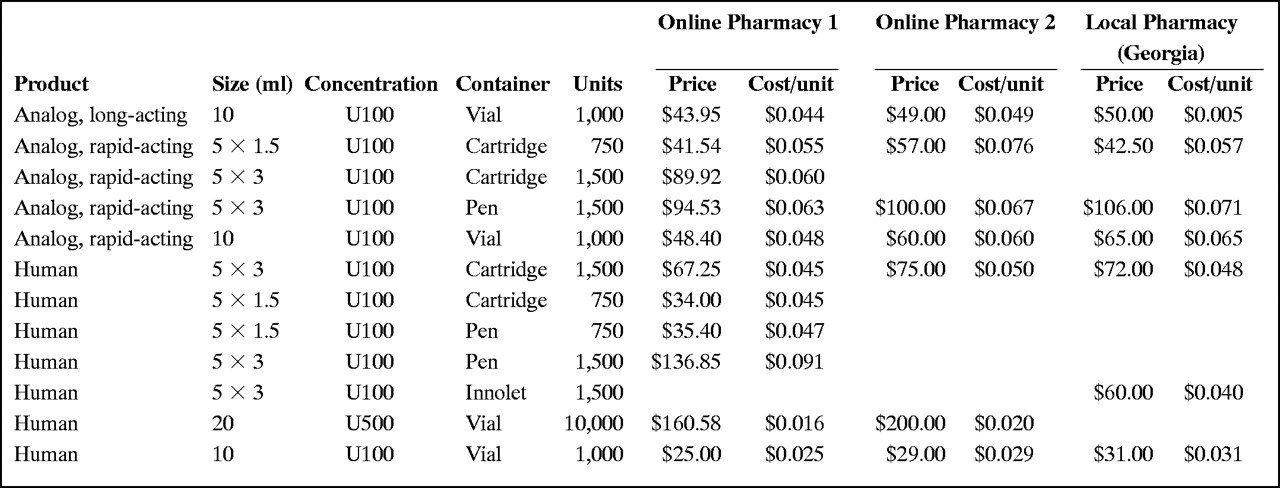
[Read more →]
Categories: Insulin
April 30th, 2008 · Comments Off on Insulin Affects History
Introduction to Insulin / Chemical Properties / Methods of Production and Administering / Diabetes / Insulin Affects History / History Affects Insulin
- Before the 20th century diabetes was a deadly disease
- has been known since antiquity
- the Greek physician Aretaeus of Cappodocia provides the oldest description of diabetes and its symptoms, reporting how the diseases makes “life disgusting and painful; thirst unquenchable;…and one cannot stop them either from drinking or making water”
- the term diabetes derives from the Greek word “to siphon” or “to pass through” since ingested water seems to run quickly through the body
- 18th century British physician coins the medical term diabetes mellitus (the condition mellitus – meaning honey or sweet)
- Wave of research for a “cure”/ treatment for diabetes was spurred by the serendipitous discovery by Paul Langerhans in 1869 of the “little heaps of cells” (Islets of Langerhans) located on the surface of the pancreas
- 1889, Polish-German physician Oscar Minkowki carried out a series of tests on animals to determine the role of the islets in regulating sugar levels
- 1921: discovery and initial development of insulin by Frederick G. Banting, Charles H. Best, James B. Collip, John J.R. Macleod in Toronto
- 1923 Banting and Macleod shared the Nobel Prize for the discovery and initial development of insulin
- in spite of the ground-breaking discovery of insulin and miraculous improvement of people’s health world-wide, diabetes today is the primary cause of new-onset blindness, accounts for a third of all cases of kidney failure, leads to half of all non-traumatic limb amputations, and overall stands as the seventh leading cause of death
- Problem: transmutation
- transmuted diseases refer to diseases that transform or change according to the combined effects of treatments and physiological processes.
- transmutation altered the biology of diabetes to create variations of diabetes and other conditions over time
- much of the history of diabetes since the 1930 has been a struggle against complications as people try to live with a chronic disease for the rest of their lives
- people with diabetes are prone to a myriad of complications such as coronary artery disease and elevated cholesterol levels
- In a 2006 study by the World Health Organization, diabetics live with a substantial risk of heart attacks, heart failure, stroke, blindness, kidney failure, and nerve damage
- the more tightly a person with diabetes is able to control the levels of sugar in the blood – through treatment, exercise, and diet – the less likely it is that these complications will develop or worsen.
[Read more →]
Categories: Insulin
Introduction to Insulin / Chemical Properties / Methods of Production and Administering / Diabetes / Insulin Affects History / History Affects Insulin
- synthetic insulin is manufactured using genetic engineering techniques that employ recombinant DNA technology
- Eli Lilly marked the first synthetic insulin, Humulin, in 1982
- Engineering technique:
- actual human DNA is inserted into a host cell (E coli)
- the host cells are then allowed to grow and reproduce normally
- due to the inserted human DNA, the host cells produce a synthetic version of human insulin
- according to a survey by the International Diabetes Federation conducted in 2002 on the access to and availability of insulin in the world, approximately 70% of insulin is recombinant, biosynthetic “human insulin”
Modes of Administration
- Unlike most other proteins that can be taken orally, the insulin amino acid structure is broken down into fragments as it passes through the gastrointestinal tract
- subcutaneous: injections with single-use syringes, an insulin pump, or by repeated-use insulin pens with needles
- insulin pump: better than syringes because patients have a better control over the dosage as the pump’s calculator determine the necessary units
- inhalation: in 2006 the U.S. Food and Drug Administration approved the use of the first inhalable insulin which was shortly withdrawn from the market due to difficulties in determining appropriate dosages
- pancreatic transplantation: pancreas transplants to avoid periodic insulin administration
- self-regulating source of insulin
- pancreas transplantation is uncommon and generally performed in conjunction with either liver or kidney transplants
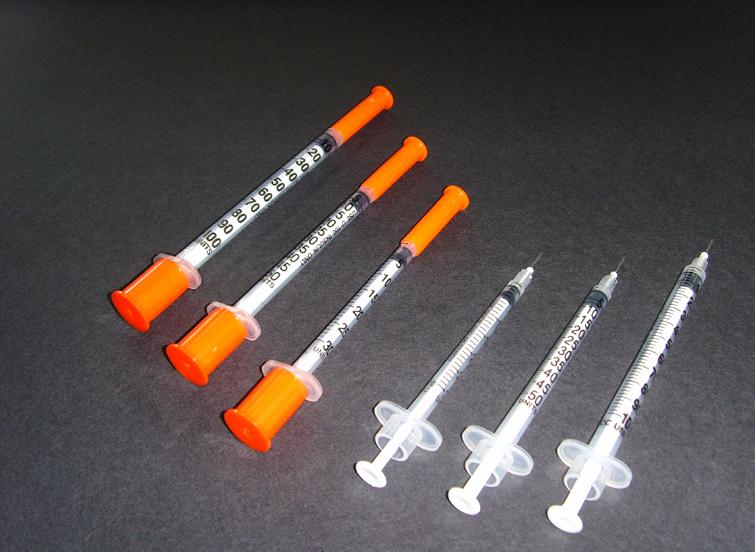
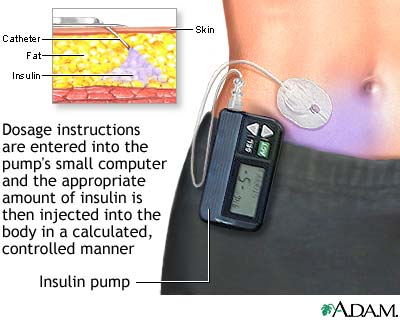
[Read more →]
Categories: Insulin
Introduction to Insulin / Chemical Structure / Methods of Production and Administering / Diabetes / Insulin Affects History / History Affects Insulin

Space filling model of the insulin monomer

- insulin molecule contains 51 amino acids
- made up of two peptide chains linked by disulphide bonds

- the insulin hormone has a complex 3D structure consisting of three short helices and 3 disulphide bridges
- the basic fold is present in all members of the insulin peptide family
- the positions of the disulphide bonds are invariant in mammalian forms of insulin
- insulin as medication was extracted in the past from cows, horses and pigs – only slight differences in the amino acid structure
- differences in suitability of beef or pork derived insulin for individual patients have been due to lower preparation purity resulting in allergic reactions to the presence of non-insulin substances/”impurities”
- synthetic “human” insulin is now manufactured for widespread clinical use through genetic engineering techniques using recombinant DNA technology, which reduces the presence of many impurities
[Read more →]
Categories: Insulin
Introduction to Insulin / Chemical Structure / Methods of Production and Administering / Diabetes / Insulin Affects History / History Affects Insulin

- Insulin is a polypeptide hormone that regulates the metabolism and several other body systems, such as the vascular system.
- insulin = Latin insula, “island” as it is produced in the Islets of Langerhans in the pancreas
- insulin control the amount of sugar in the blood. When a person eats or drinks, food is broken down into materials, including sugar, that the body needs to function. Sugar is absolved into the blood stream and stimulates the pancreas to produce insulin.
- insulin allows sugar to move from the blood into the cells. Once inside the cells, sugar is converted into energy, which is either used immediately or stored until it is needed
- if the body does not produce enough insulin to move the sugar into the cells, the resulting high levels of sugar in the blood and the inadequate amount of sugar in the cells together produce the symptoms and complications of diabetes.
YouTube video on Insulin and Diabetes
[Read more →]
Categories: Insulin




